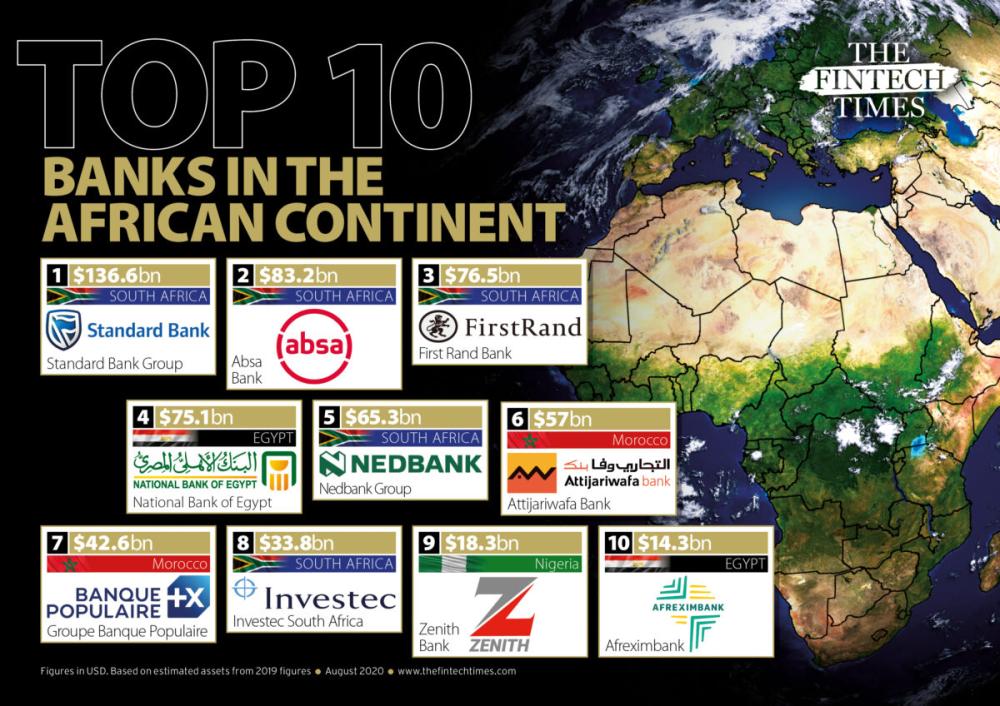AFRICA MEDIA PRODUCTION AGENCY
Africa’s Top 100 Banks 2024: A Shift Towards Global Dominance
Briefing
Description :
Africa’s banking industry continues to rise in prominence, with the continent’s biggest banks not only dominating the regional landscape but also preparing to expand their influence globally. The 2024 African Business Top 100 Banks ranking highlights the winners in this dynamic sector, as many institutions aim to leapfrog outdated technologies and go directly to all-digital banking. However, despite rapid growth in digitalization, only a few neobanks are currently profitable.
A significant trend among African banks is the attempt to bypass traditional banking infrastructures like debit and credit cards and move directly to digital banking. This strategy is evident as the largest banks across the continent focus on digital transformations to remain competitive in the face of mobile money and fintech developments. This leapfrogging approach promises to reduce costs, increase efficiency, and expand customer reach, especially in underbanked regions. For instance, Kenya's M-Pesa continues to be a global leader in mobile money, providing a model for other nations seeking to implement innovative financial solutions.
By comparison, while Africa is making strides in mobile money adoption, only 20-30% of Africans currently use digital banking services. This is significantly lower than in regions like Latin America, where 50% of the population uses such services, or in developed economies, where the figure exceeds 70%. As digitalization accelerates, African banks are positioned to bridge this gap, but the process will require substantial investments in digital infrastructure.
North African banks have emerged as top performers in this year's rankings. South Africa’s Standard Bank Group has retained its position as the continent’s largest bank, with Tier 1 capital standing at $12.5 billion. However, the National Bank of Egypt, ranked second for the fourth consecutive year, is quickly closing the gap with $7.5 billion in Tier 1 capital.
Notably, Morocco's Attijariwafa Bank has made significant gains, moving up to third place after a 12% increase in its Tier 1 capital, now totaling $6 billion. In contrast, South Africa’s Absa Bank rebounded to fourth place, despite a 1% decrease in capital, highlighting how some African banking giants are facing challenges in maintaining growth.
Nigeria's banking sector, long considered one of Africa's strongest, saw some declines this year due to the sharp depreciation of the naira against the US dollar. First Bank of Nigeria (FBN) Holdings slipped to 15th place, while Zenith Bank dropped from 12th to 17th place. The currency fluctuations have impacted the Tier 1 capital rankings as the conversion to USD does not always reflect the banks’ growth in local currencies.
Profitability and Return on Equity (ROE): African Banks Outshine Global Competitors
In terms of profitability, African banks are outperforming many global institutions when measured by Return on Equity (ROE). Rawbank from the Democratic Republic of Congo leads the continent with an astounding 62% ROE. Similarly, Egyptian banks like HSBC Bank Egypt, Housing and Development Bank, and Credit Agricole Egypt all reported ROEs above 55%, far exceeding the 10.3% average ROE of US banks in 2024.
The African banking sector’s ROE has rebounded from the pandemic, rising to 20% this year, compared to 17% in 2023 and 14% in 2022. This is a stark contrast to the global average, which hovers around 13%.
Despite these successes, African banks continue to grapple with economic challenges. The aftermath of the COVID-19 pandemic, the war in Ukraine, and global inflation have affected the continent’s economies. Rising food and energy prices, combined with the effects of climate change, have hit vulnerable populations the hardest. Central banks across the continent have raised interest rates to control inflation, boosting bank profits but at the cost of increased borrowing rates for businesses and consumers.
The African Development Bank forecasts that the continent’s economic growth will rise to 3.7% in 2024, up from 3.1% in 2023. However, population growth across many countries could dampen the impact of GDP growth when measured on a per capita basis.
Africa’s top banks are increasingly expanding beyond their home markets. Standard Bank Group, the continent’s largest bank, operates in 19 countries, and nearly half of its earnings come from its African operations. Absa Bank, which also has a strong presence across the continent, is seeing success in Ghana and Kenya. Morocco’s Attijariwafa Bank and Banque Centrale Populaire are expanding across francophone Africa, strengthening their position as regional leaders.
Egyptian banks are also making moves. Commercial International Bank (CIB) expanded into Kenya in 2020 by acquiring Mayfair Bank, and its continued focus on trade finance and digitalization positions it well for further growth in East Africa.
Despite the growing popularity of neobanks—digital-only banks that aim to offer streamlined services—many are still struggling to turn a profit. South Africa’s Tyme Bank is one of the few that reported profitability, with its first profit in 2023. However, other neobanks across the continent, such as Nigeria’s Opay and Egypt’s digital banking startups, are still finding their footing in a competitive market.
Unlike traditional banks, which rely on large customer deposits for financing, neobanks depend on venture capital and have yet to build substantial customer bases or profitable business models. However, their agility and technological focus make them a significant challenge to established banks, forcing incumbents to adapt and innovate.
As African banks embrace digital transformation and expand across borders, they are positioning themselves not just as regional leaders but as global players. The African Continental Free Trade Agreement (AfCFTA) is a crucial driver of this integration, and as African economies recover from recent global shocks, banks will play a key role in fostering economic growth.
The next few years will be critical for the continent’s banking sector, as institutions continue to adapt to digitalization and overcome structural challenges. With rapid growth in internet access and mobile phone usage, Africa’s banks are set to leapfrog traditional banking models and lead the charge towards a digital financial future.





